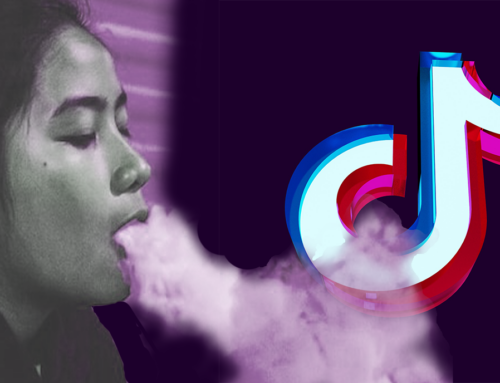Testimony presented at the House Judiciary Committee Oversight Hearing to Examine Youth Culture and Violence on May 13, 1999
Dewey G. Cornell, Ph.D., Curry School of Education, University of Virginia
Mr. Chairman, Distinguished Members, Ladies, and Gentlemen. I am Dr. Dewey Cornell, a clinical psychologist and a professor in the School of Education at the University of Virginia. I direct the Virginia Youth Violence Project which studies school safety and violence prevention. For the past 15 years I have conducted research on the psychological profiles of juveniles who have committed murder, and I have professionally evaluated many juvenile offenders, including the 14-year-old boy from Paducah who fired into a prayer group and killed 3 of his classmates.
Let me begin with some good news. Violent crime by juveniles is down. After ten years of steady increase, juvenile violence has declined substantially for the past 5 years. We can no longer say “nothing works”. There is now a substantial body of scientifically rigorous research telling us what works (see reviews by Cornell, 1999; Lipsey and Wilson, 1997; Sherman et al., 1997). Problem-oriented, community policing works. Controlled studies tell us that teaching young people how to resolve conflicts, linking them with mentors, and giving them healthy and constructive activities after school prevents delinquent behavior. Rehabilitative treatment for juvenile offenders, especially with community-based and in-home follow-up, reduces criminal recidivism. Well-run, adequately staffed programs are highly cost-effective (for example, see Karoly, et al., 1998).
Despite our progress, we have a problem with violence and threats of violence in our schools. Although overall crime in schools has not increased, in the past two years e have had a series of high-profile shootings with multiple victims. The media attention given to these shootings has generated substantial fear and concern in the general public. Although I am concerned about the effects of sensational and exploitive news coverage of traumatized victims and terrified parents, these shootings deserve our attention because they are symptomatic of more pervasive problems in our youth culture. Across the country we have had waves of bomb threats, angry youth have drawn up hit lists, and in some cases we have discovered groups of youth who have conspired to obtain weapons and commit similar atrocities. We have probably prevented more school shootings than we have experienced.
…………………………………………………………………………………………………………………………………………………………………………….
Profiles of Violent Youth
How do we understand these troubling events? Who are these young people and what is wrong with them? First let me emphasize that there is no single profile of the violent juvenile offender. Over the past 15 years my work has focused on 3 major categories of violent youth (Cornell, Benedek, & Benedek, 1987; Cornell, 1999).
The Mentally Ill- About 5%
First are the mentally ill youth who are psychotic and suffer from delusions that guide their behavior. This constitutes only about 5% of the youth who kill someone.
The Antisocial Youth- About 65%
Second are the antisocial youth. About 2/3 of the juveniles who commit homicide have a long history of delinquent of disruptive behavior, with problems evident in early childhood. They re aggressive, impulsive, dishonest, and generally below average intelligence. Drug use nad gang membership are common. They tend to come from disadvantaged homes and dysfuncitonal families. These are the youth who drove up violent crime in the late 1980’s and early 1990’s.
The Previously Apparrently Normal-About 30%
The third group is most puzzling, because they often appear to be normal youngsters whose acts of violence surprise us. However, these youth are emotionally troubled and conflicted-alienated, angry, and depressed. They may be intelligent and capable, but they are not satisfied with their achievements and often feel unfairly treated by others. Although they may have some friends, they feel lonely and isolated. They are highly sensitive to teasing and bullying, are deeply resentful, ruminating over perceived injustices. As they become more depressed, their judgement and perspective becomes distorted, like the suicidal person who thinks life isn’t worth living and that there is no way to solve their problems other than dying. In this case, however, the conflicted youth decides to kill others rather than himself. These are the youth who are involved in most of the school shootings.
…………………………………………………………………………………………………………………………………………………………………………….
The Previously Apparrently Normal
We can learn from these school shootings because they reflect factors not typical of the antisocial offenders. They challenge our stereotypes and force us recognize violent influences we otherwise might overlook. They were committed by white, middle class youth who had many social and economic advantages. Many of them came from good homes where they were loved, not abused, by their parents. Many of their parents were well-respected citizens and good role models for their children. Although it is common to blame the parents in these cases, this cannot explain what their children did. At worst, we can say that these parents failed to recognize what was happening to their children, not that they caused it to happen. A breakdown in parental supervision is a serious problem, but it is not the full explanation. Instead, we have to recognize the role of broader cultural factors affecting children outside the home.
There are may risk factors for violence, and many young people today have one or more risk factors, yet do not engage in violent behavior. In order for violence to occur, there must be a motive for violence, method of committing violence which the child has learned, and a means of carrying out the violence. Let’s consider the motive, method, and means of the recent school shootings.
Motive. The motives are not new, they are familiar to anyone who remembers their teenage years. These are young people who are outcasts from their peers. Often they are victims of bullying and teasing. They join rebellious cliques that are attracted to counter-cultural ideas, whether they are beatniks, hippies, or goths. Within these counter-cultural groups some youth are especially vulnerable — more angry, alienated, and depressed than their peers, and more susceptible to friends who encourage them to act out or take revenge. In case after case I have seen youth who discussed the possibility of murder with their families and were advised to go ahead and do it.
Method. Even more disturbing is the horrific method of these murders. To charge into a building and try to kill as many people as possible is an enactment of video violence. This is the kind of violence you see in the movies and play on video games. Children of today live in a social environment where violence is a primary form of entertainment, and they are exposed to values and ideas which reinforce and glorify violence. In case after case I have observed just how easily the lessons of well-meaning and capable parents are overpowered by the compelling and pervasive messages of violence in our modern video culture. We protect adults from consumer fraud and deceptive advertising better than we protect our children from these salesmen of hate and violence. As a society, we must be more concerned about the daily does of extreme violence administered to our children through television, video games, music, and the internet. Repeated exposure to messages of violence and hatred over time desensitize many young people, distort their perceptions of personal safety, and erode inhibitions against harming others.
Scientific studies provide overwhelming evidence that television violence encourages aggressive behavior and has a long-term effect on children (see reviews in Berkowitz, 1993; Donnerstein, Slaby, & Eron, 1995; Hughes & Hasbrouck, 1996). Yet the entertainment industry cannot accept these findings any more than tobacco industry could accept that cigarette smoking results in cancer. Concern over our children is cunningly transformed into a debate over constitutional freedom. We have trouble appreciating causal effects that are subtle, indirect, and cumulative over long periods of time. What’s the harm in one video game or one cigarette?
I know you will hear representatives from the entertainment industry who simplistically point out that millions of children exposed to video violence never commit a violent act; in reply, be sure to ask them how it can that when millions are exposed to a flu virus, only a small proportion become ill, and only a handful die. The violence pervasive in our culture is like an environmental toxin; everyone is exposed to it, but only those who are most vulnerable or have the greatest exposure, are affected.
Today we have a lot of children infected with violence, but it’s not a virus, it’s a learned behavior. Violence is learned (Berkowitz, 1993; Perry, Perry, & Boldizar, 1990). Someone taught the kids in the Trenchcoat Mafia to admire Hitler and how to make pipebombs rather than to tolerate differences and respect others.
Means. Finally, the means to carry out these violent plans is the ready availability of firearms. Without access to guns, none of these school tragedies could have take place. Guns are a critical risk factor. When juvenile homicide tripled in this country in just ten years, all of the increase was in gun-related killing (Cornell, 1993; Snyder & Sickmund, 1995). There was no increase in juveniles stabbing or beating one another to death. Guns are not the cause of the violence, but they provide the means.
For the full testimony see: http://www.apa.org/ppo/issues/pcornell.html







Leave A Comment